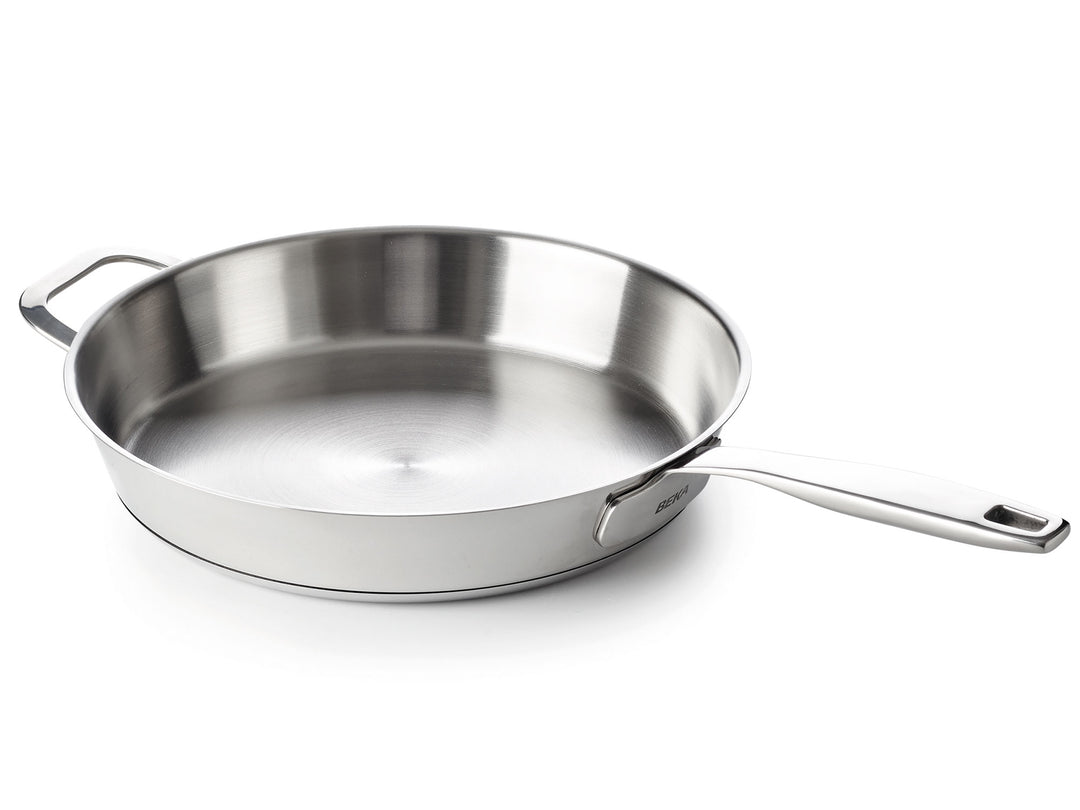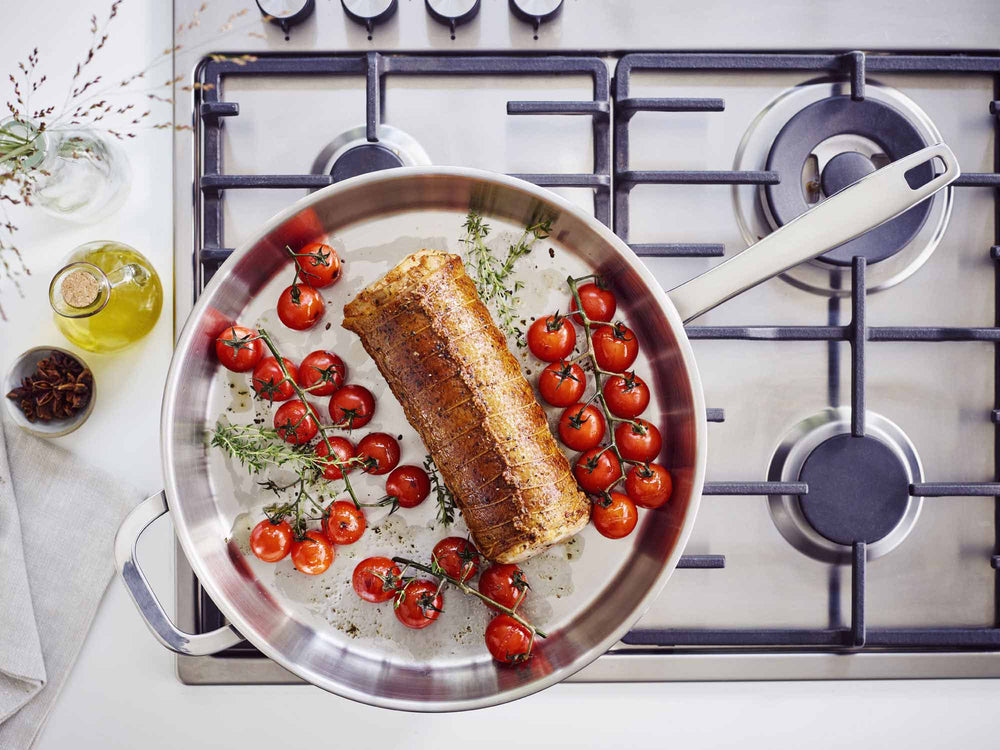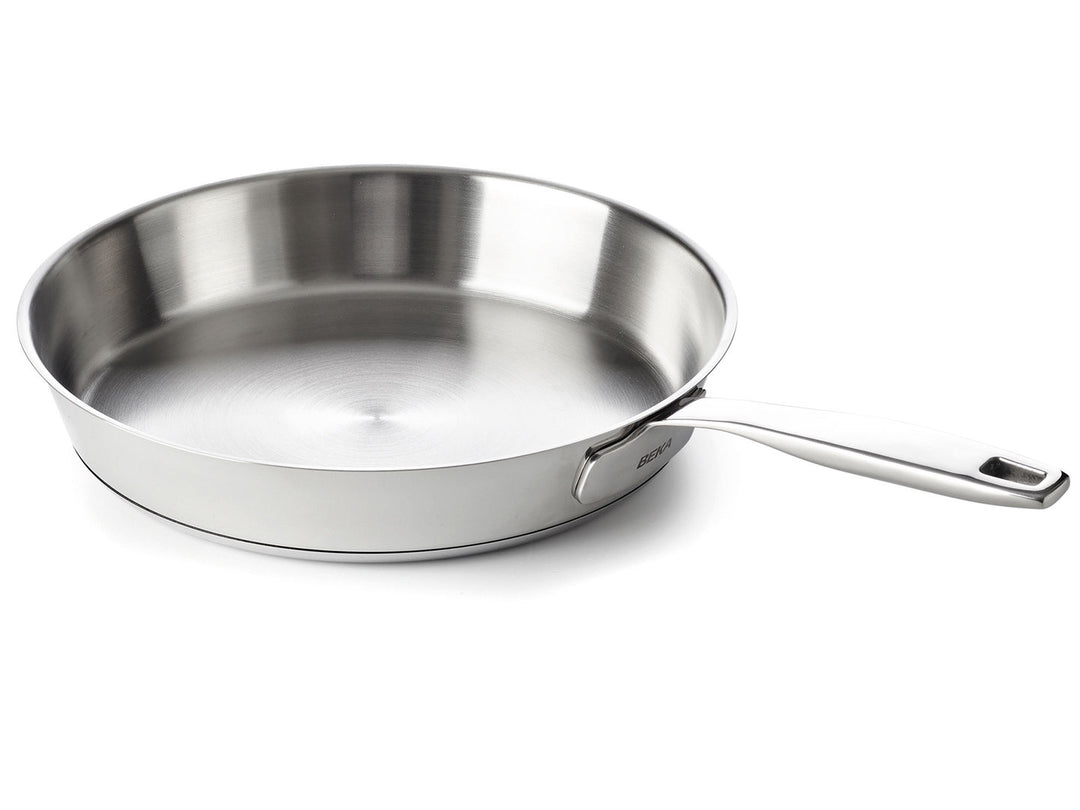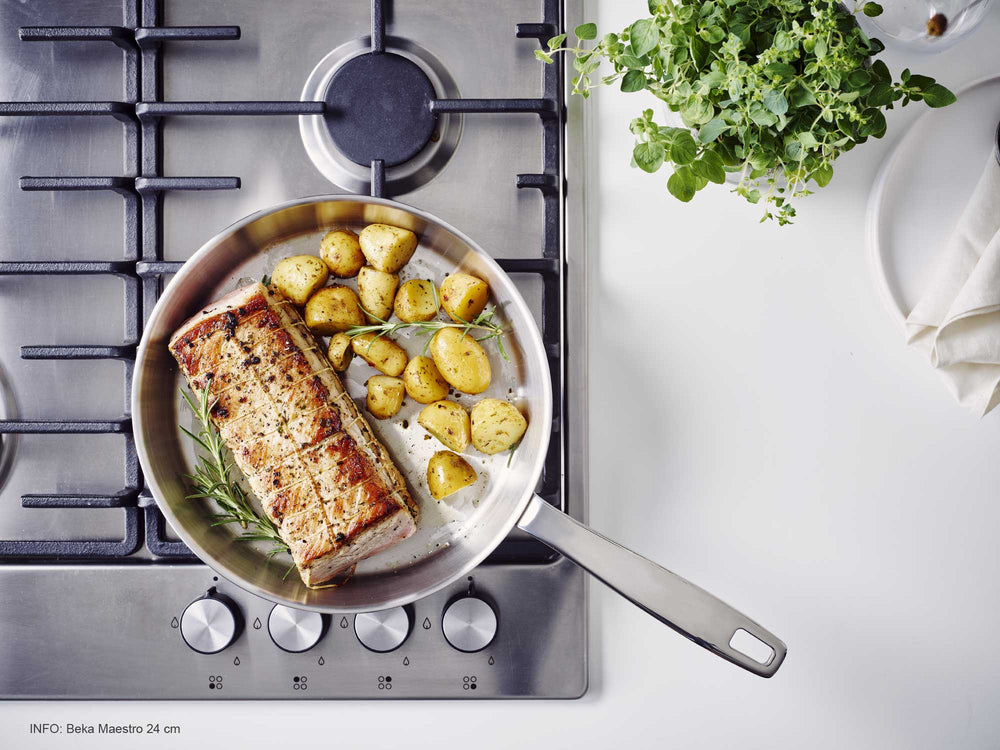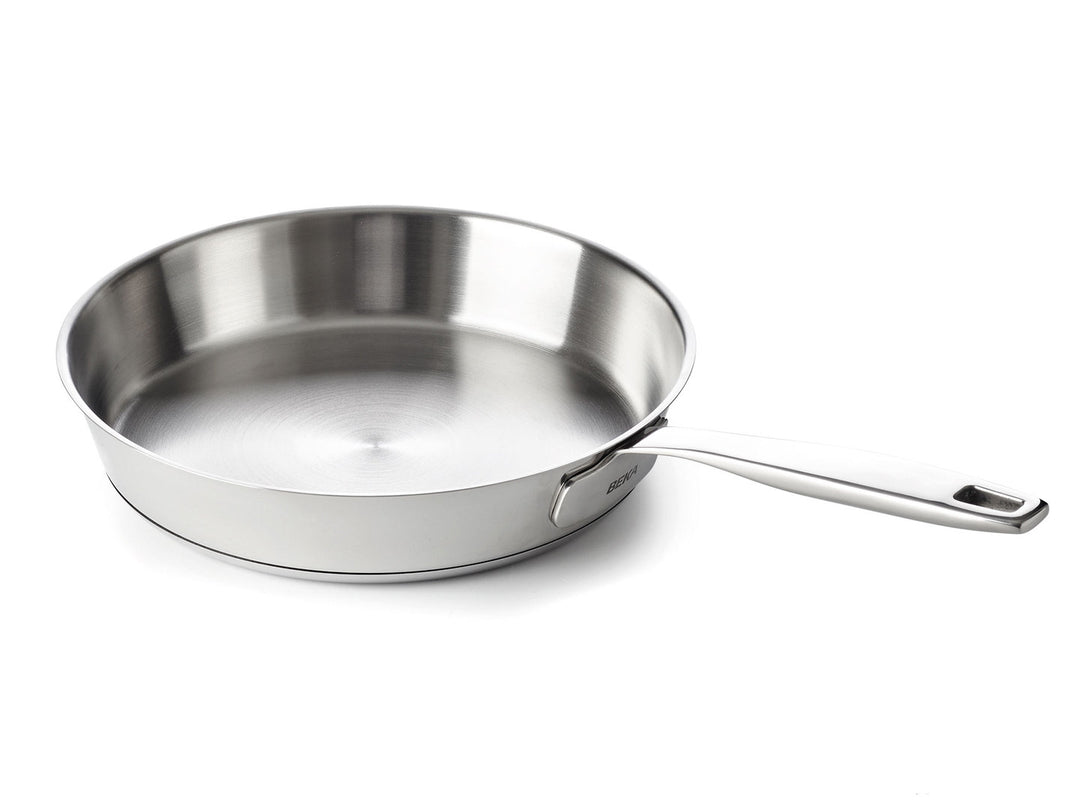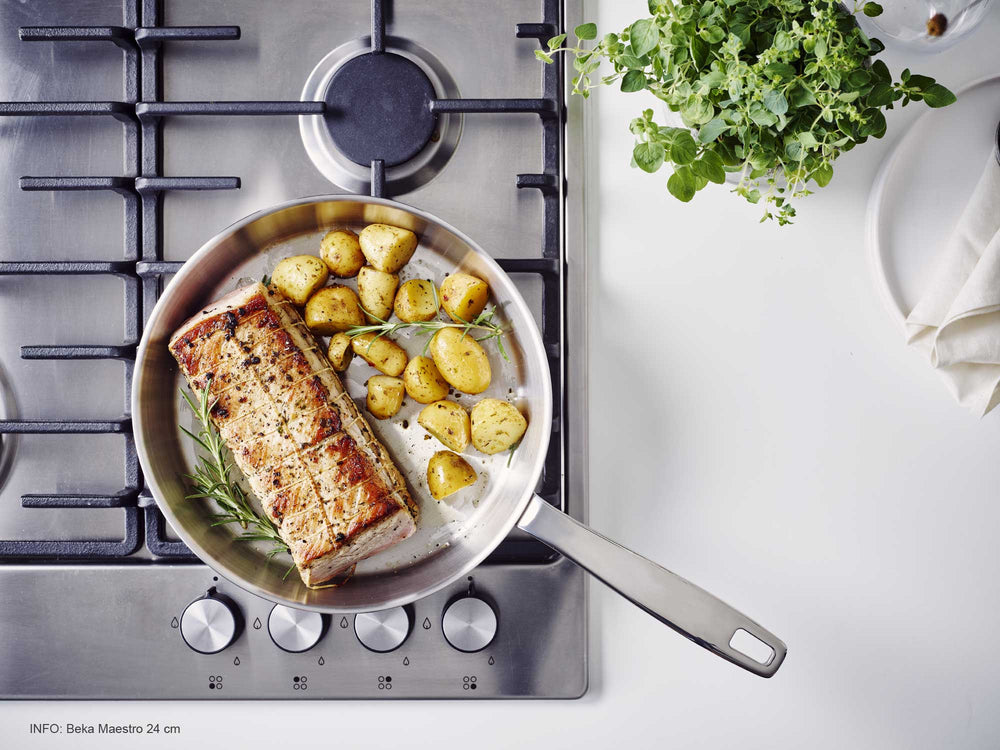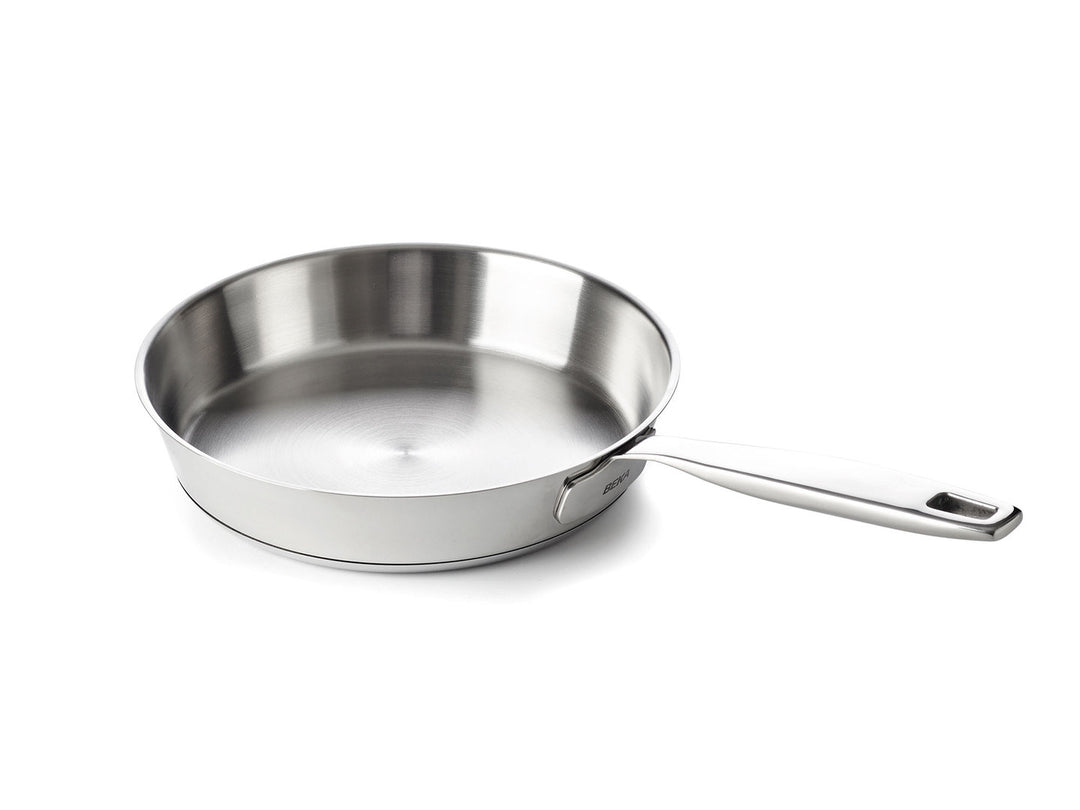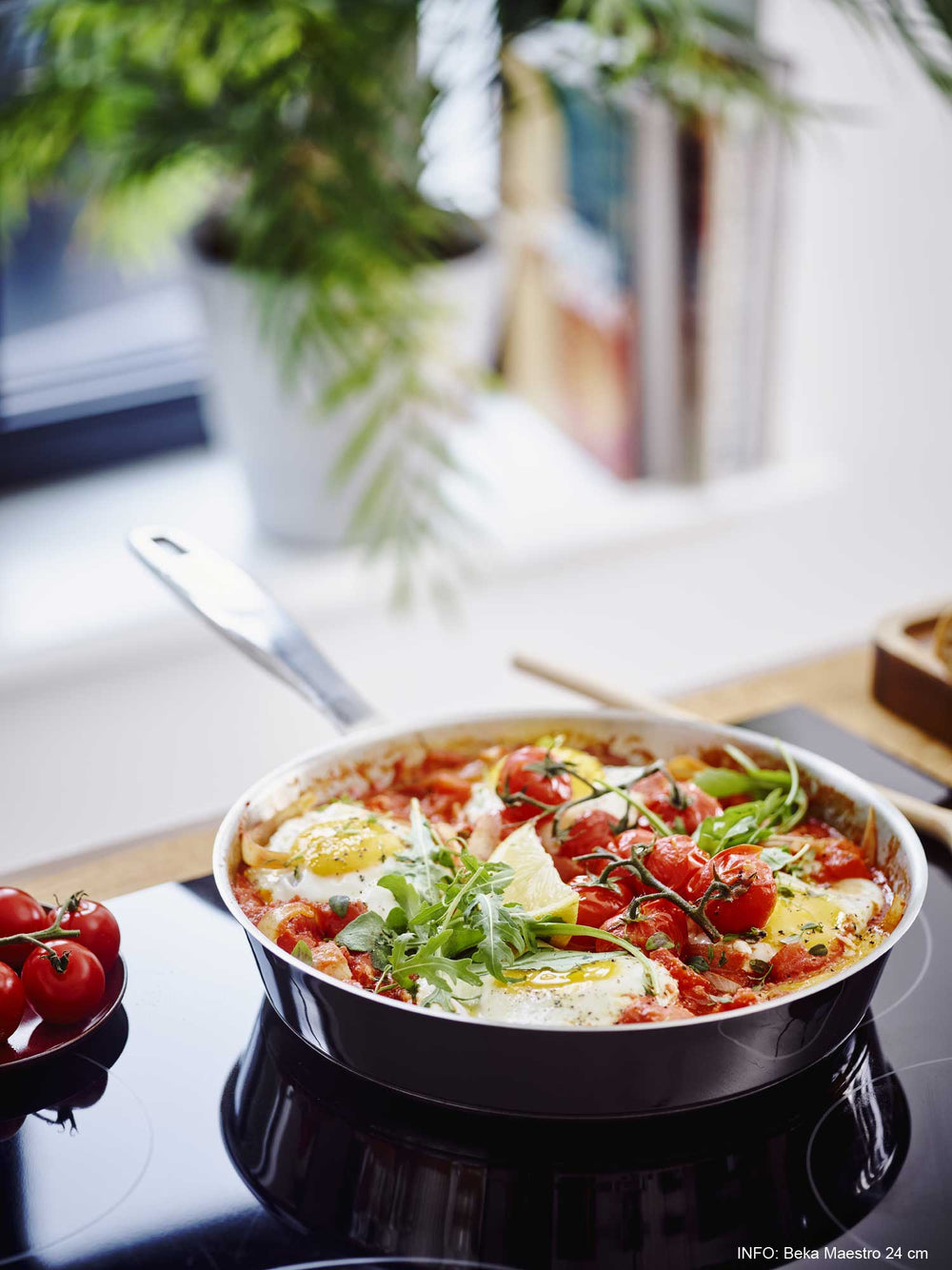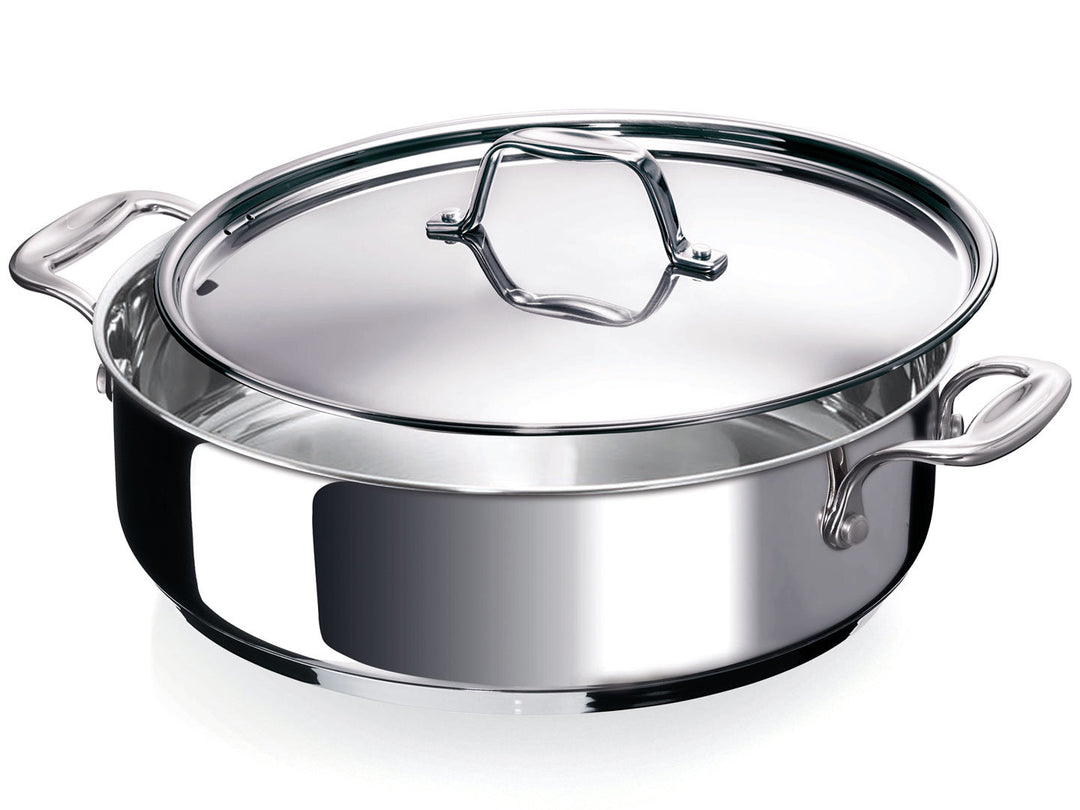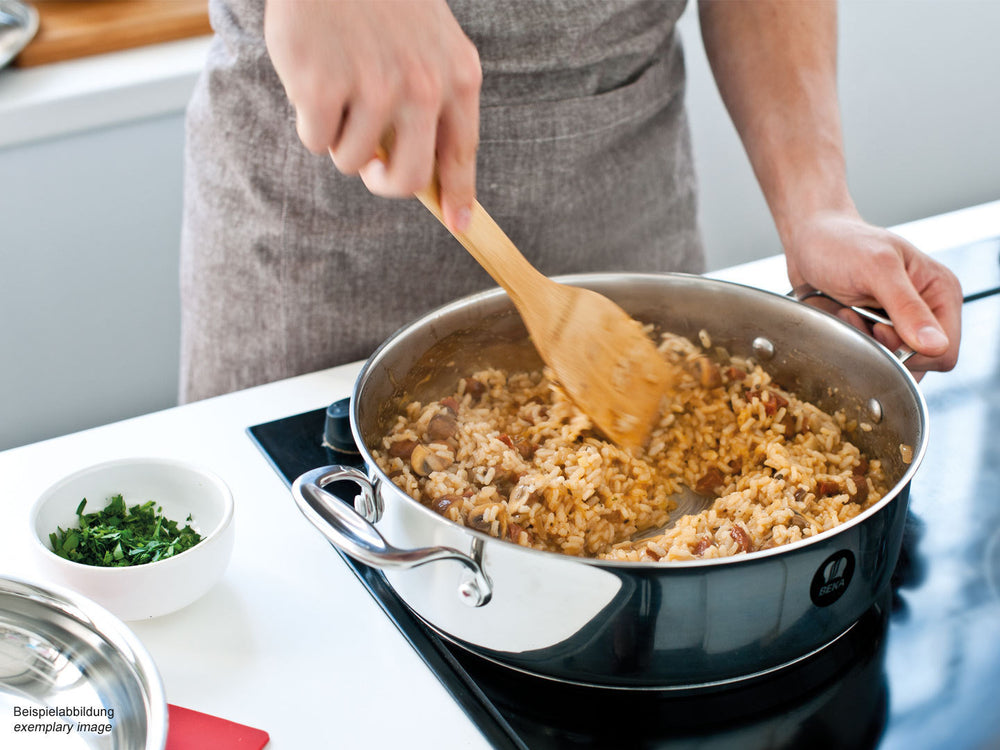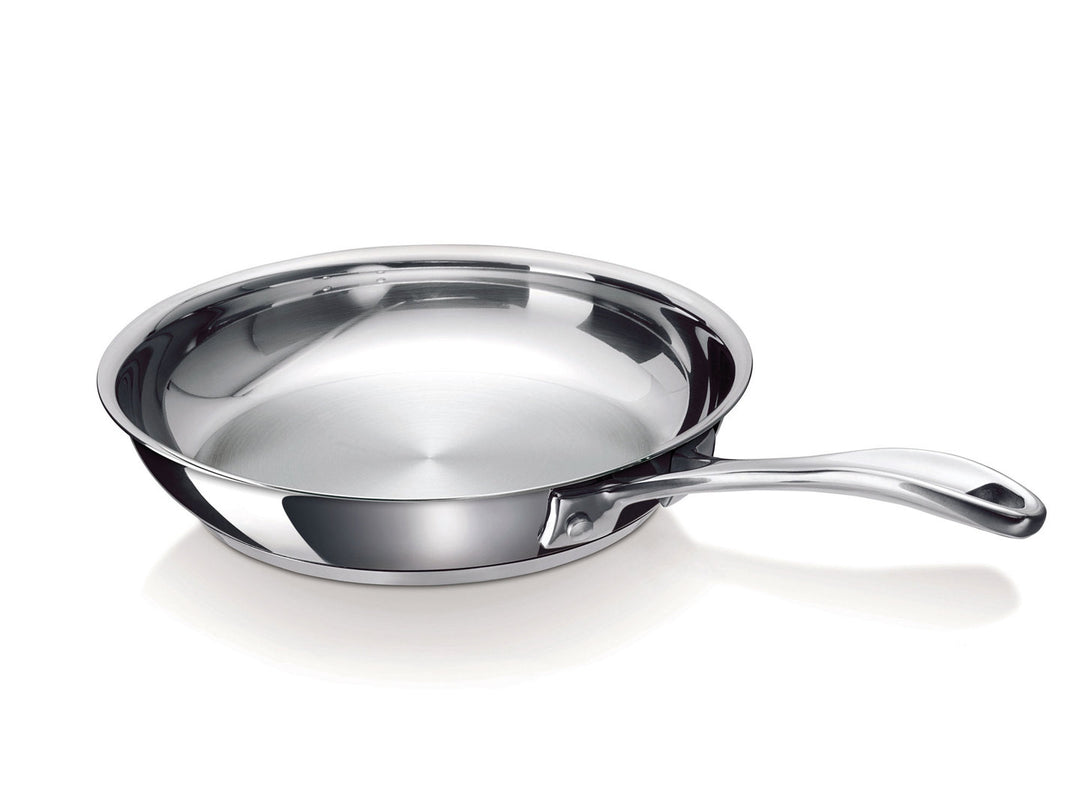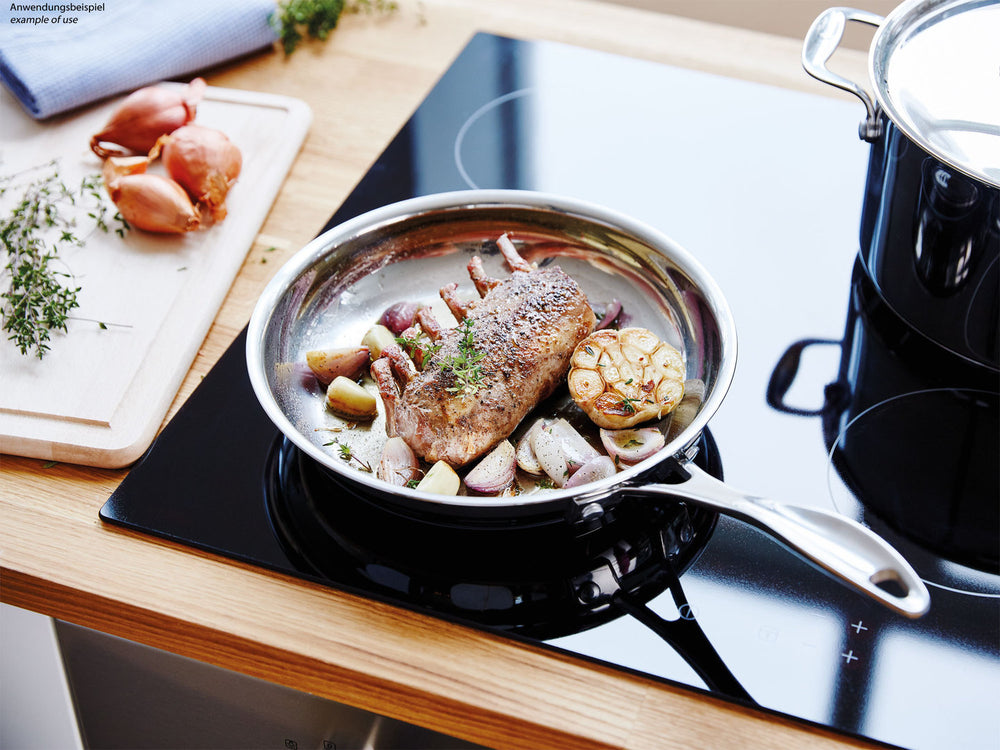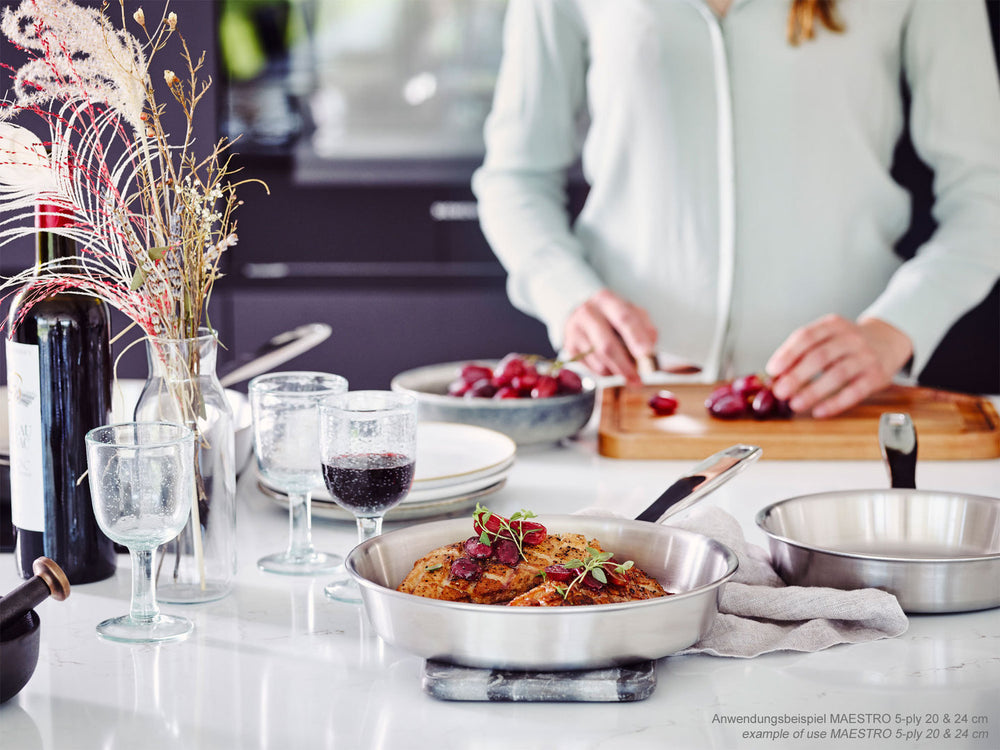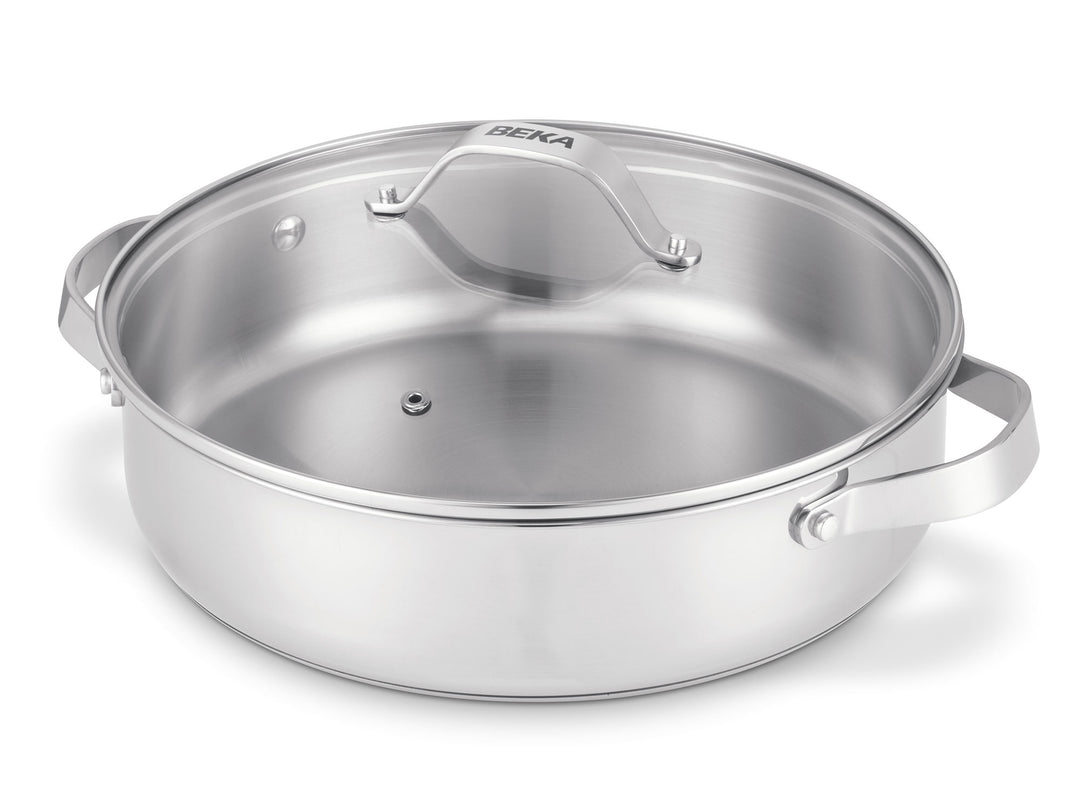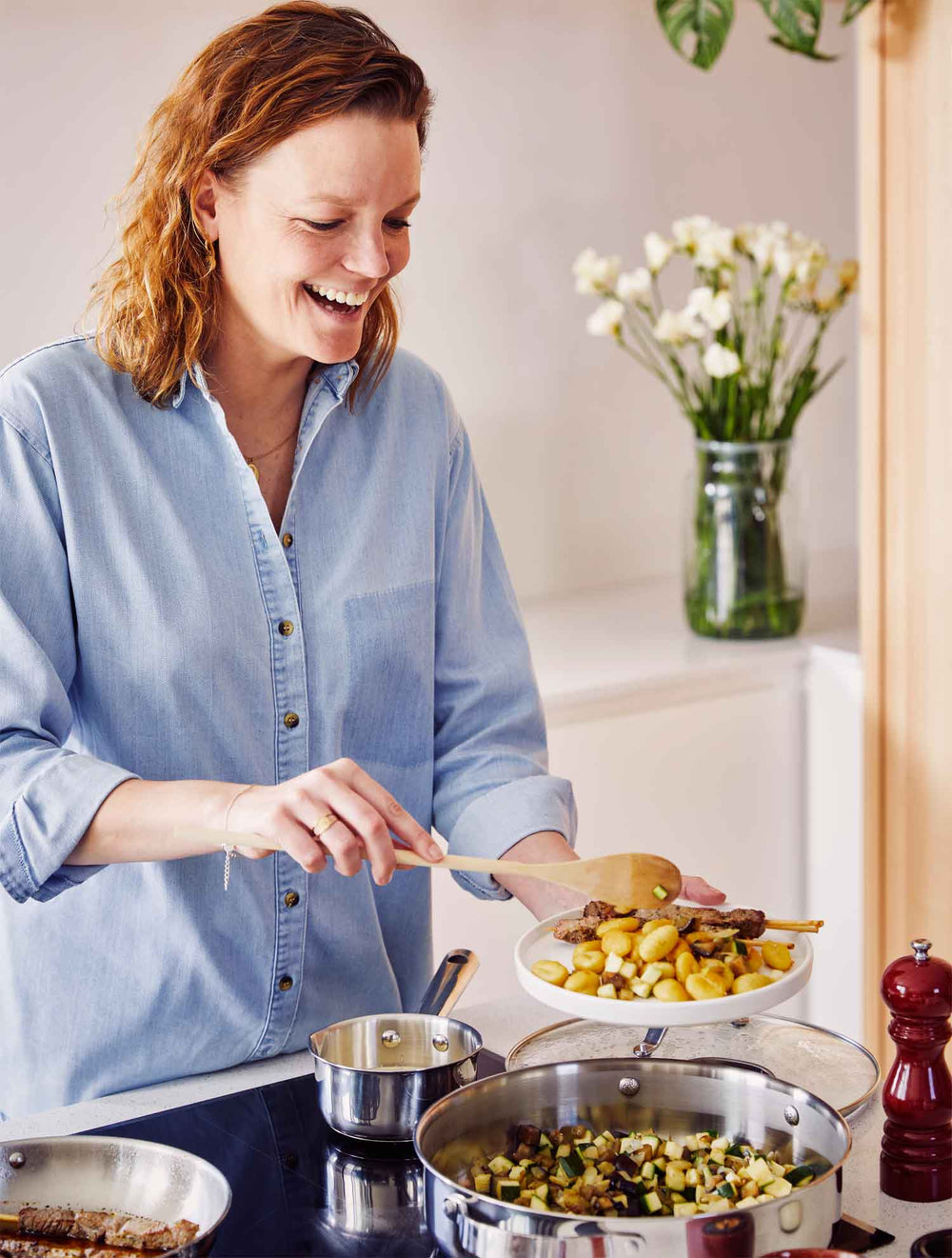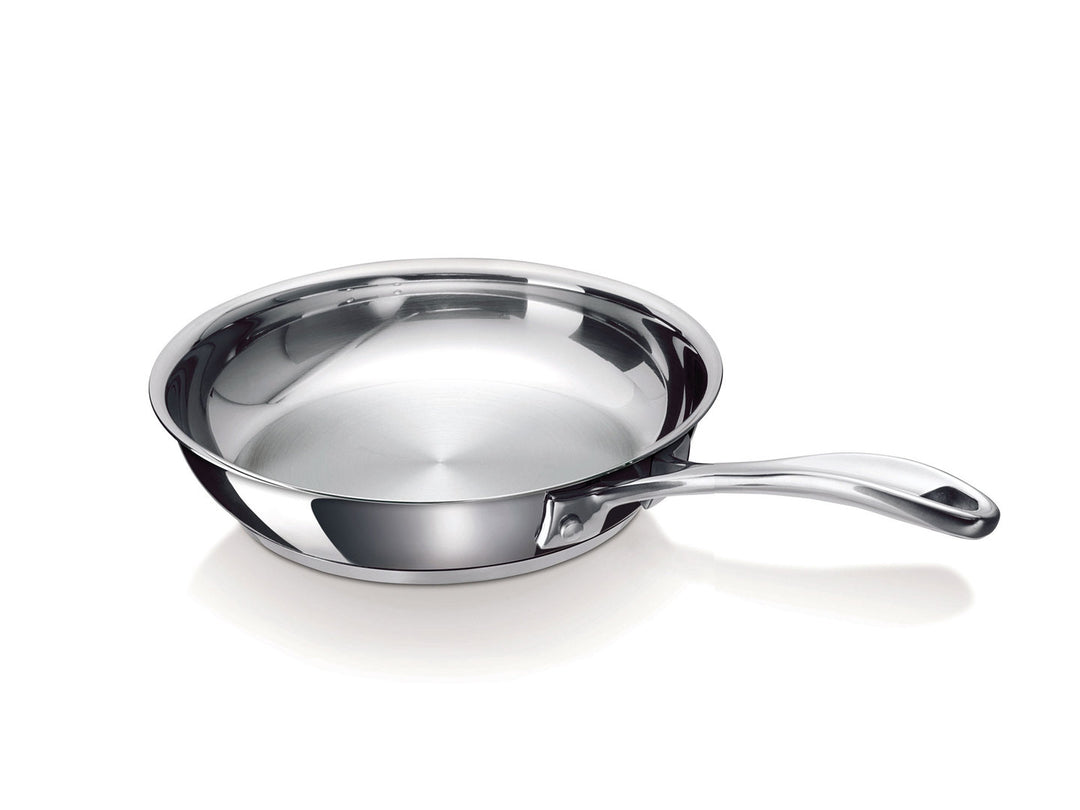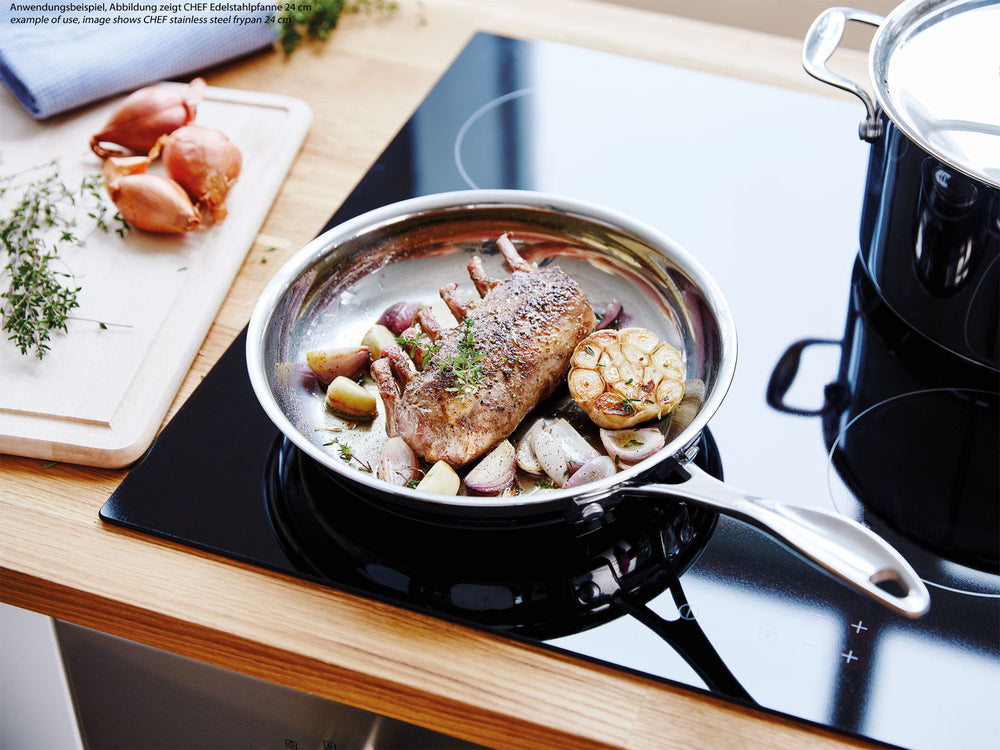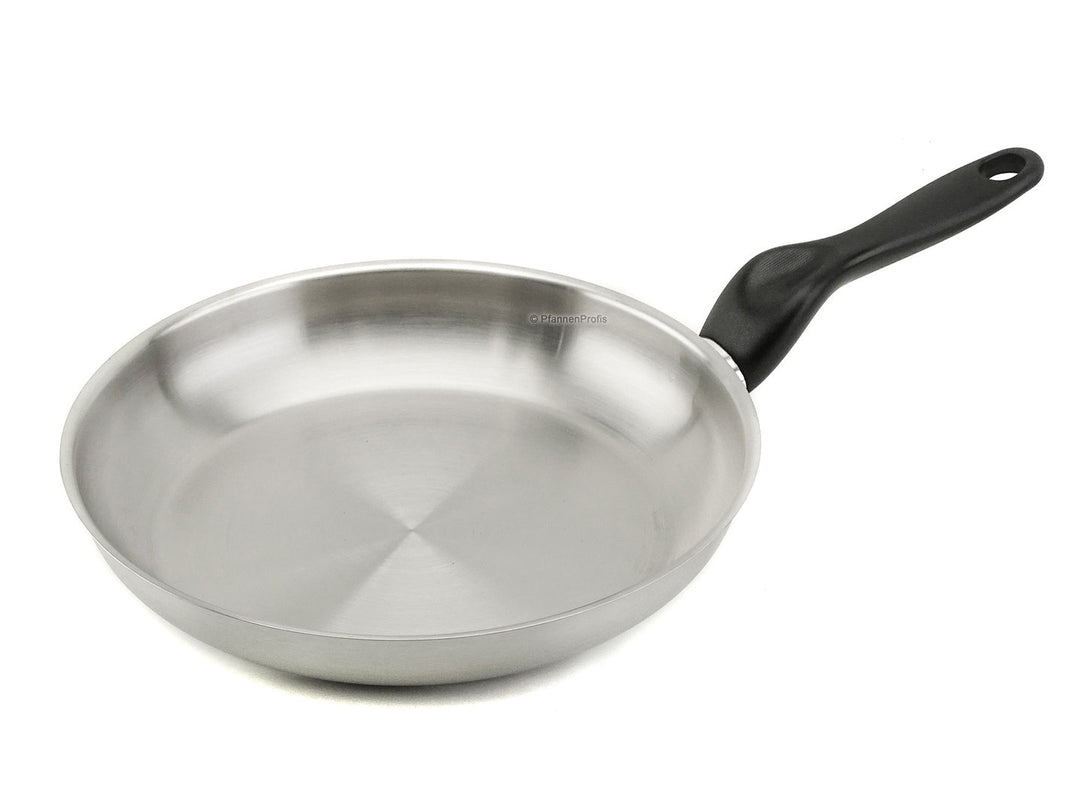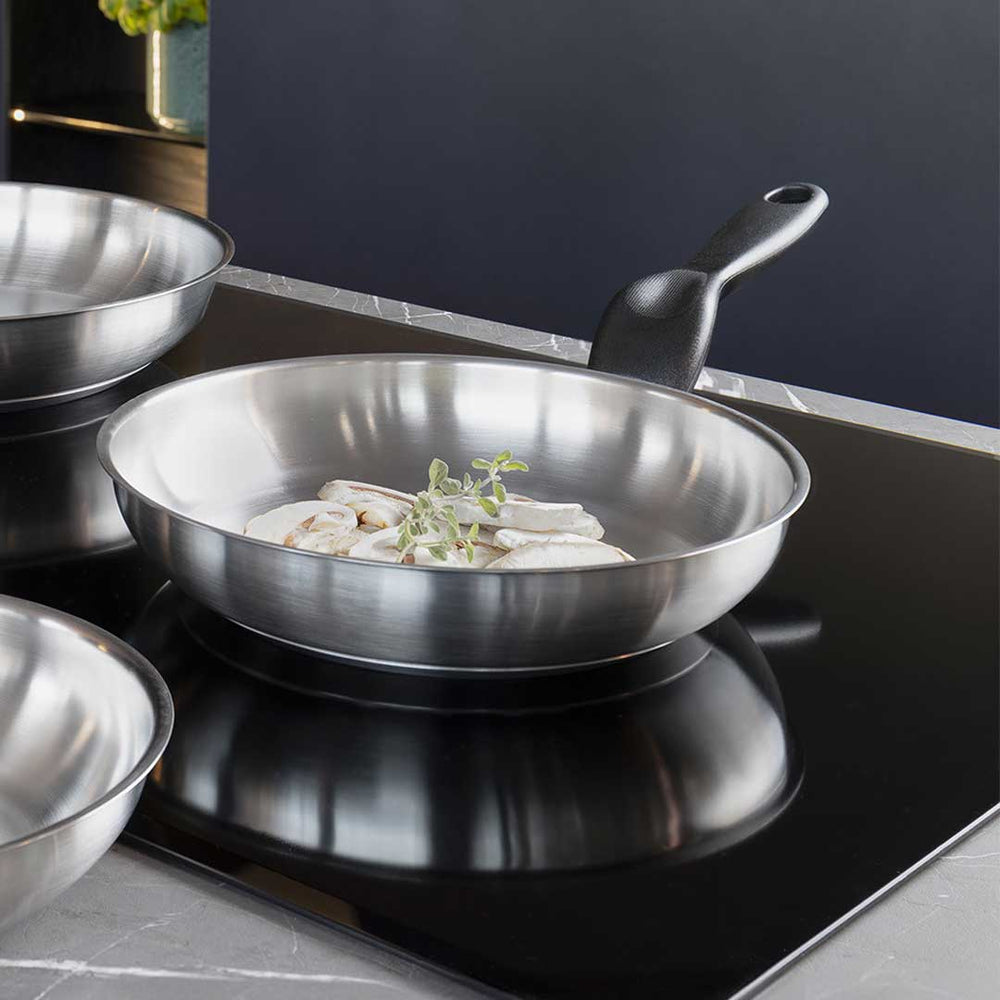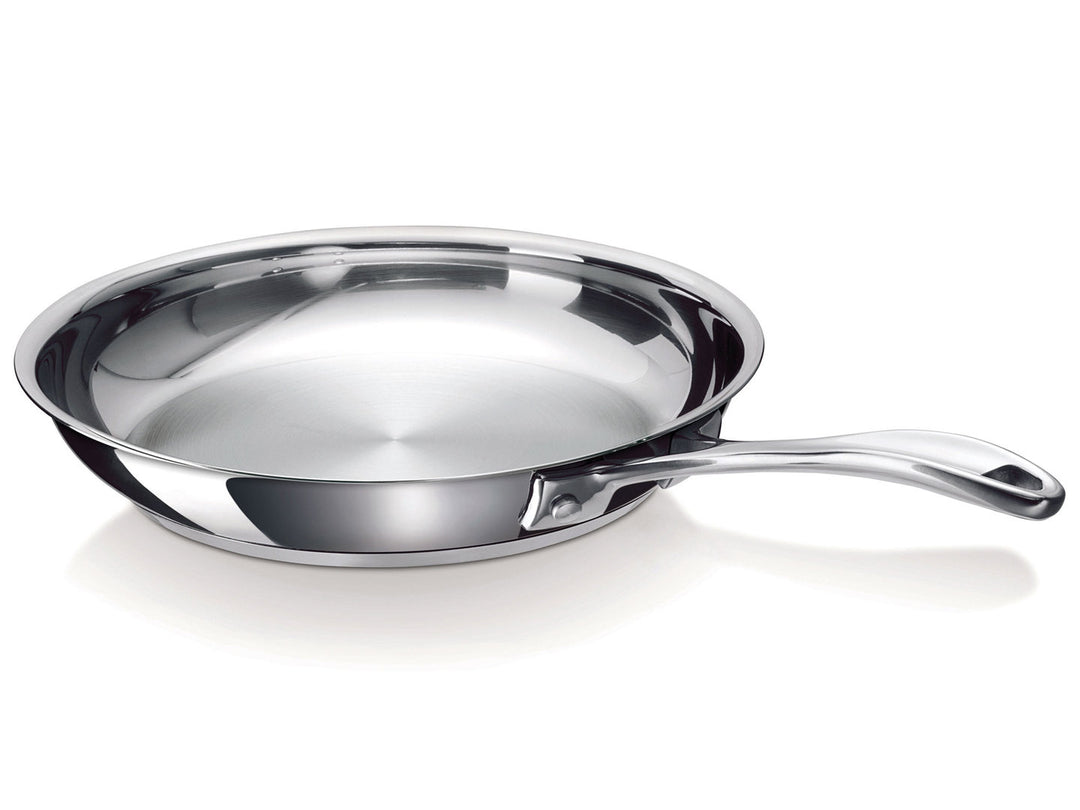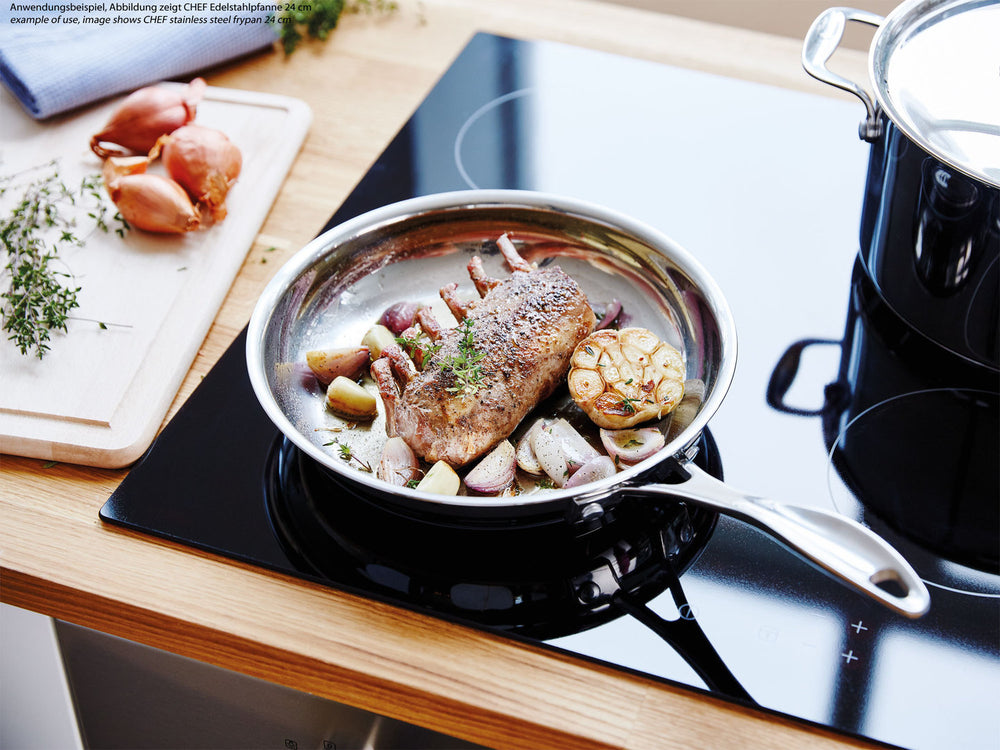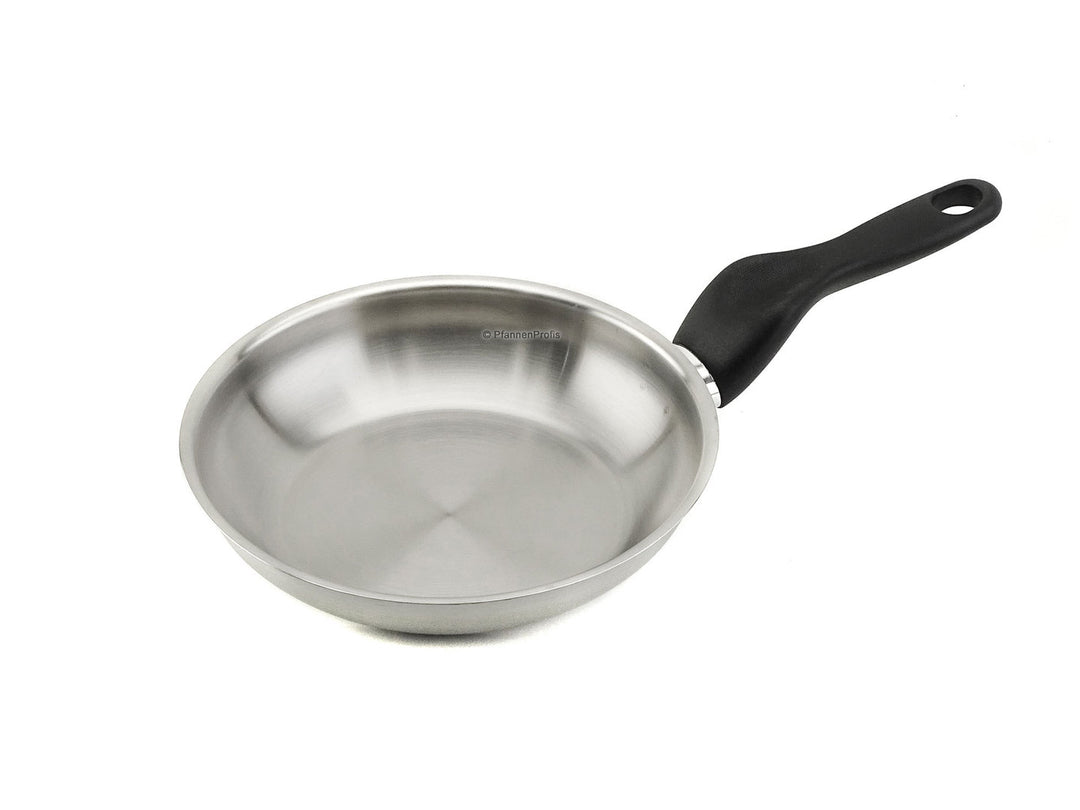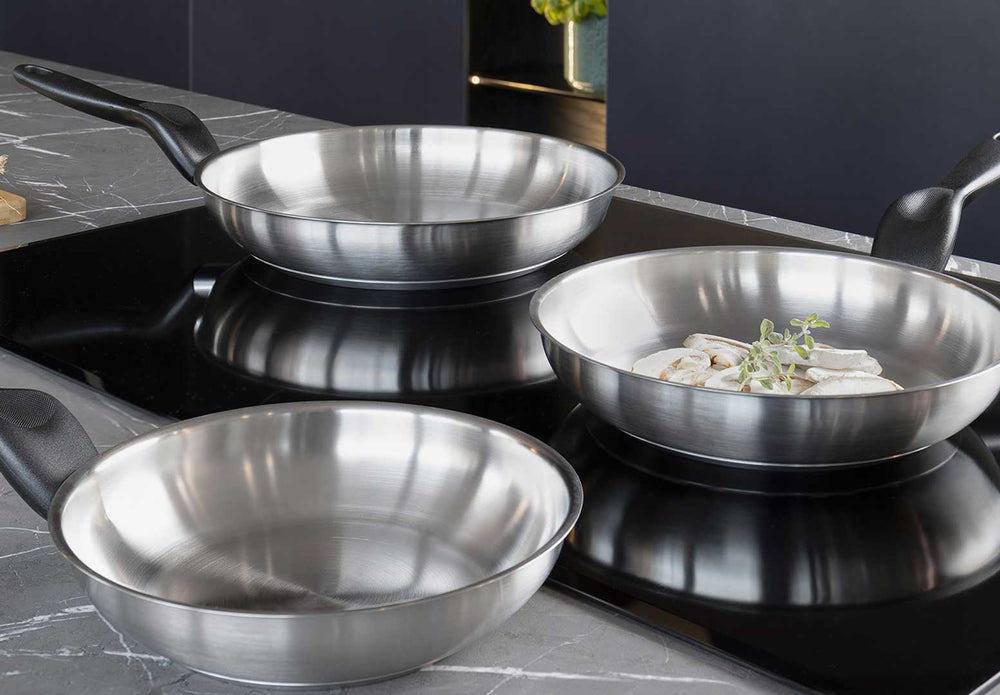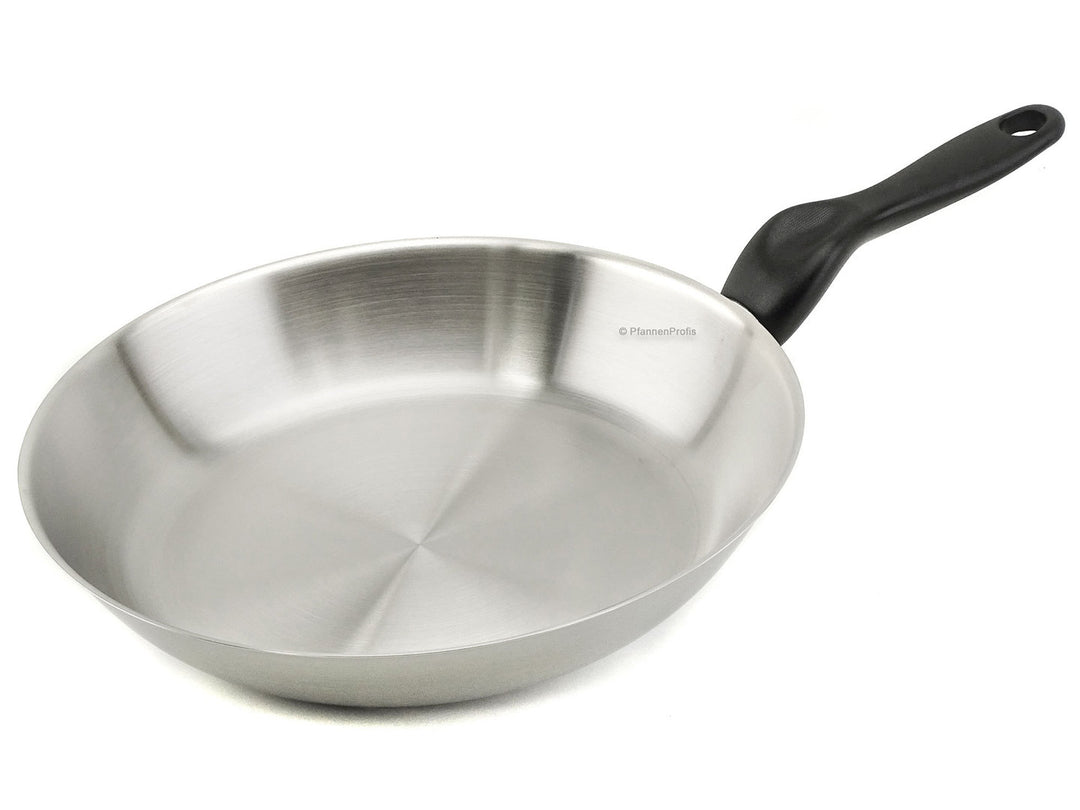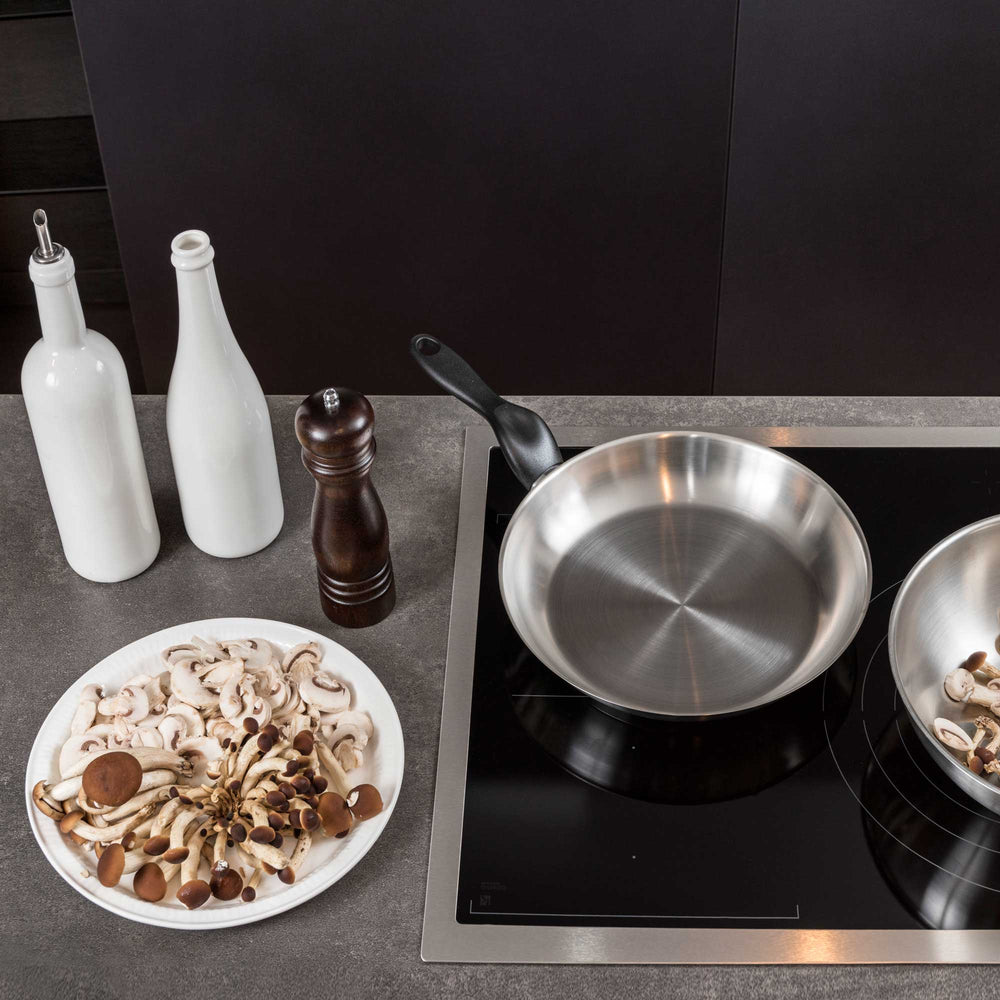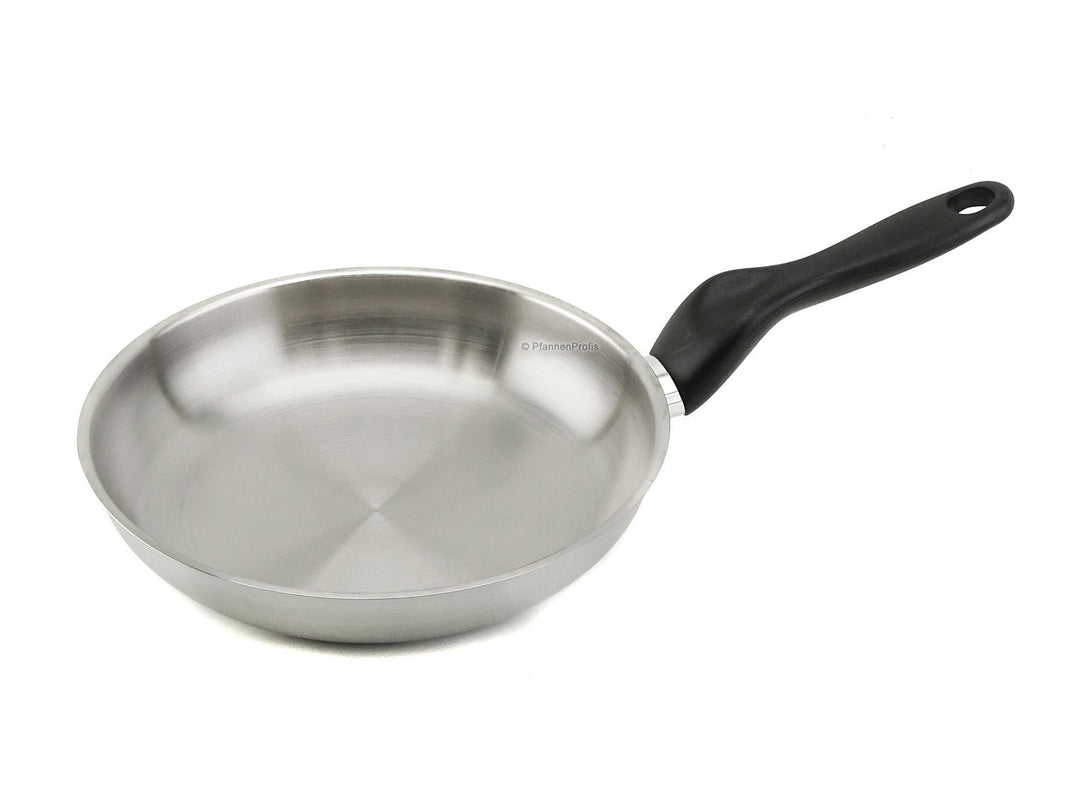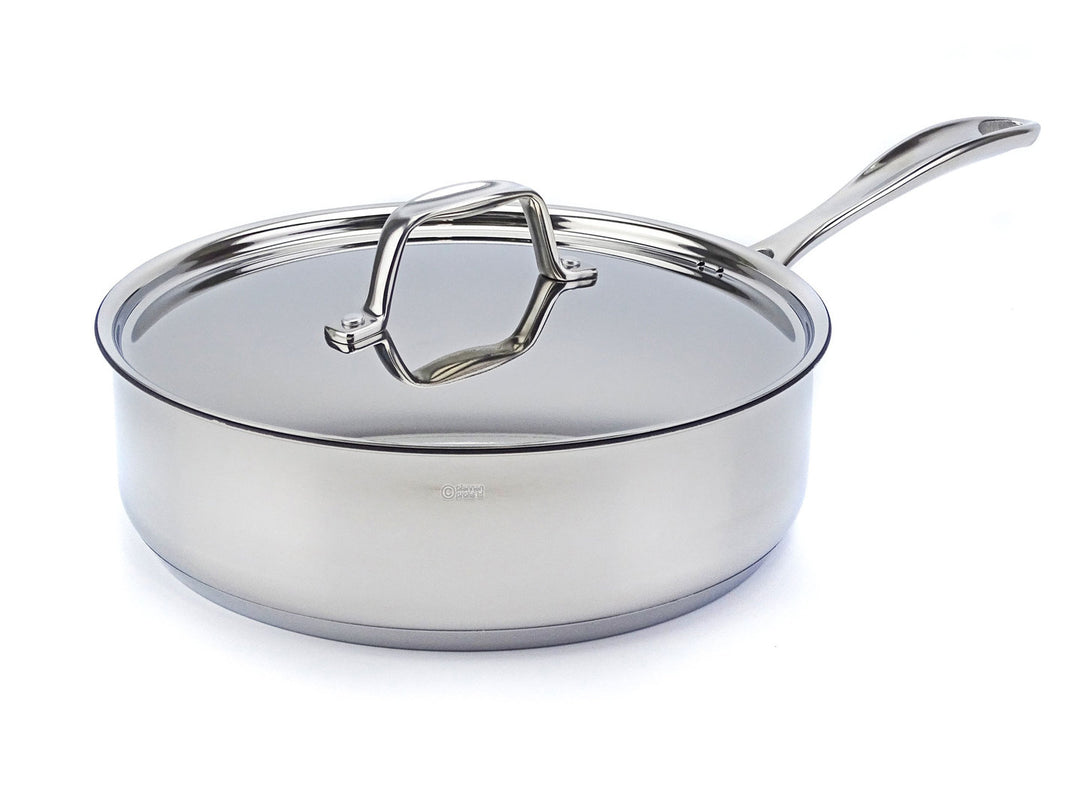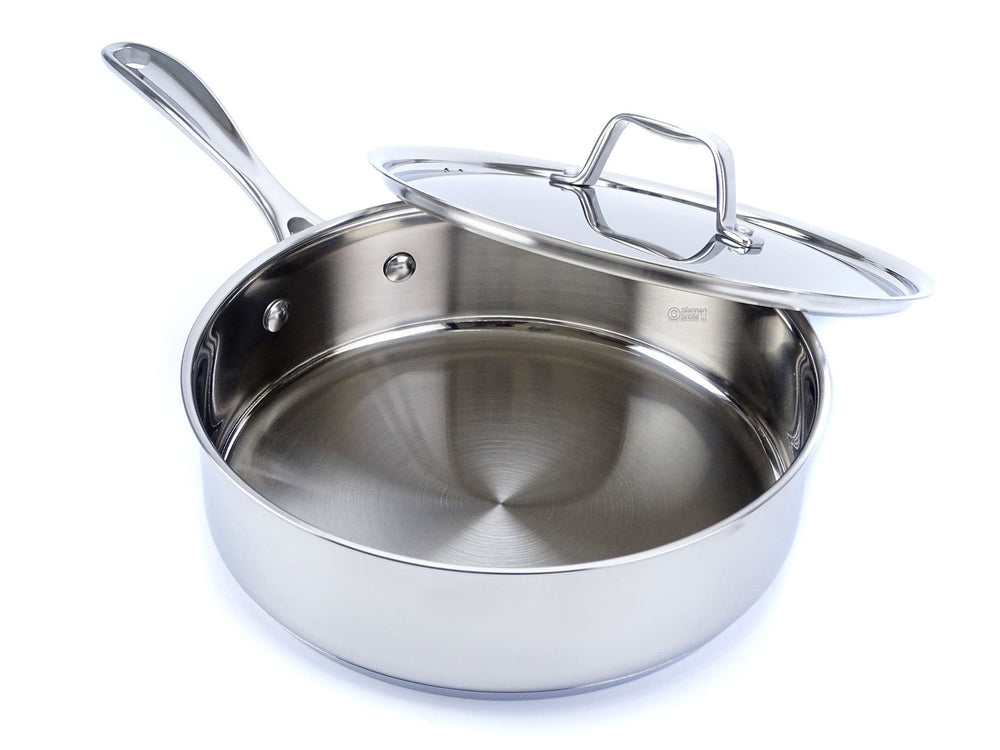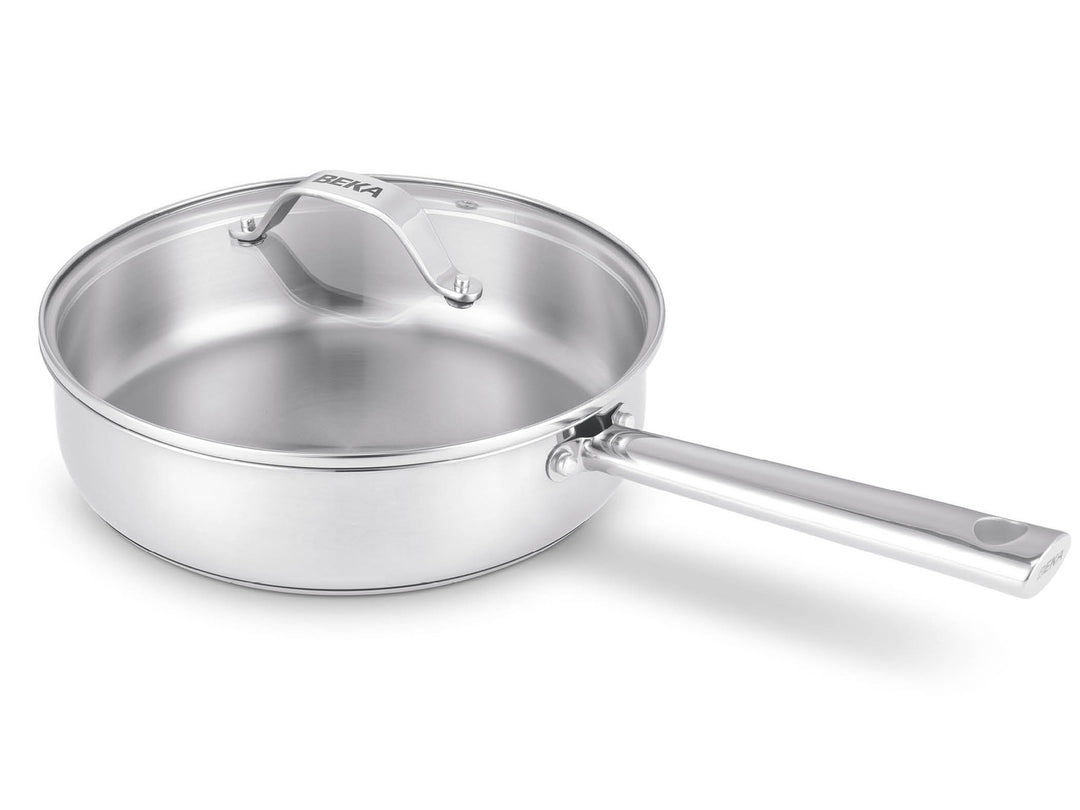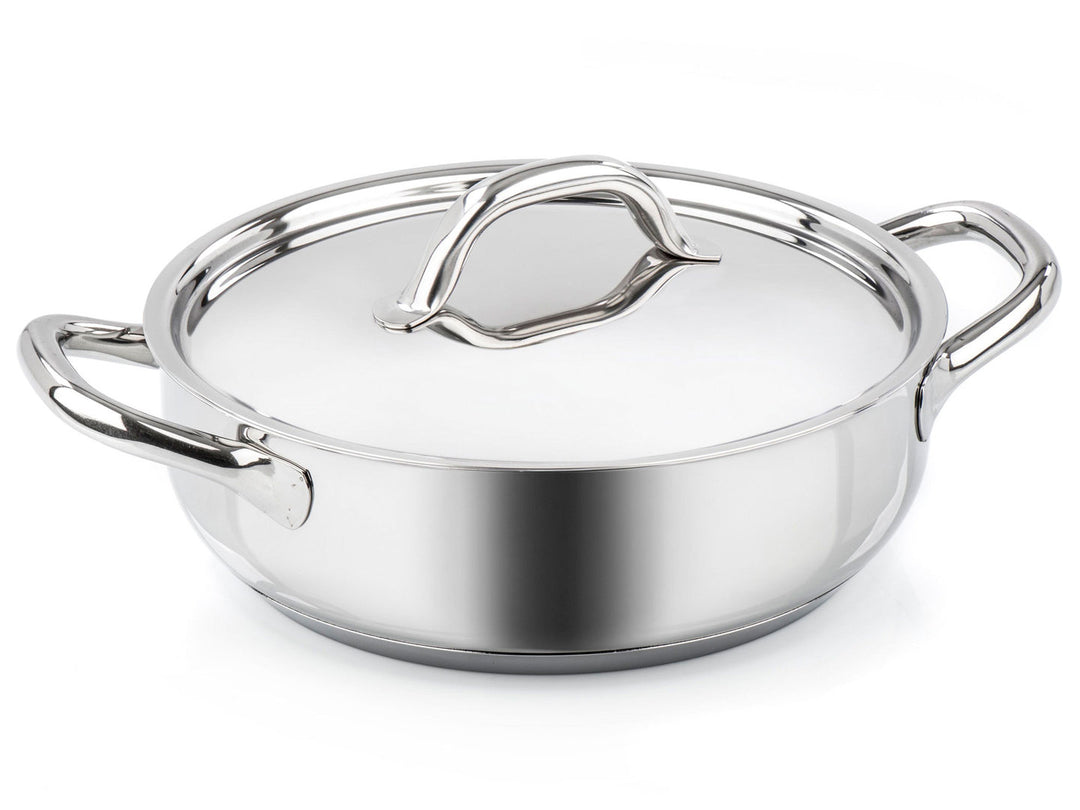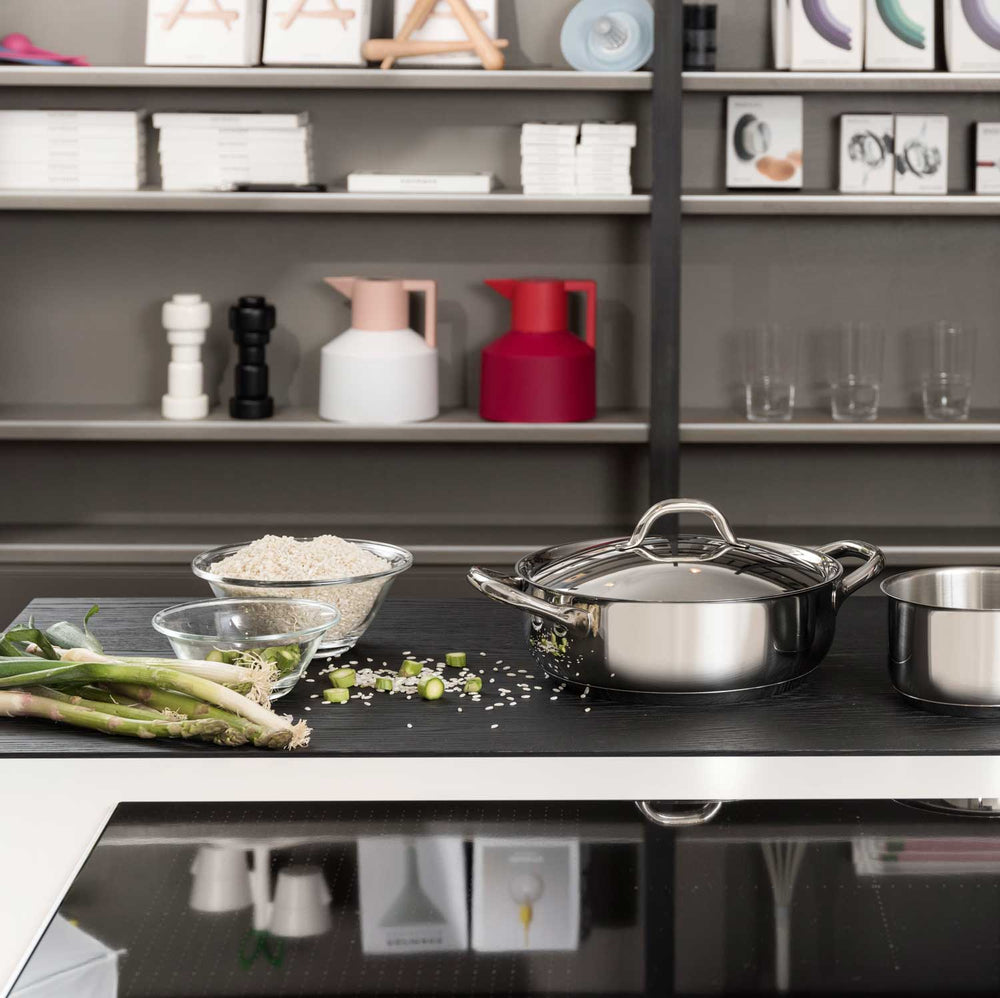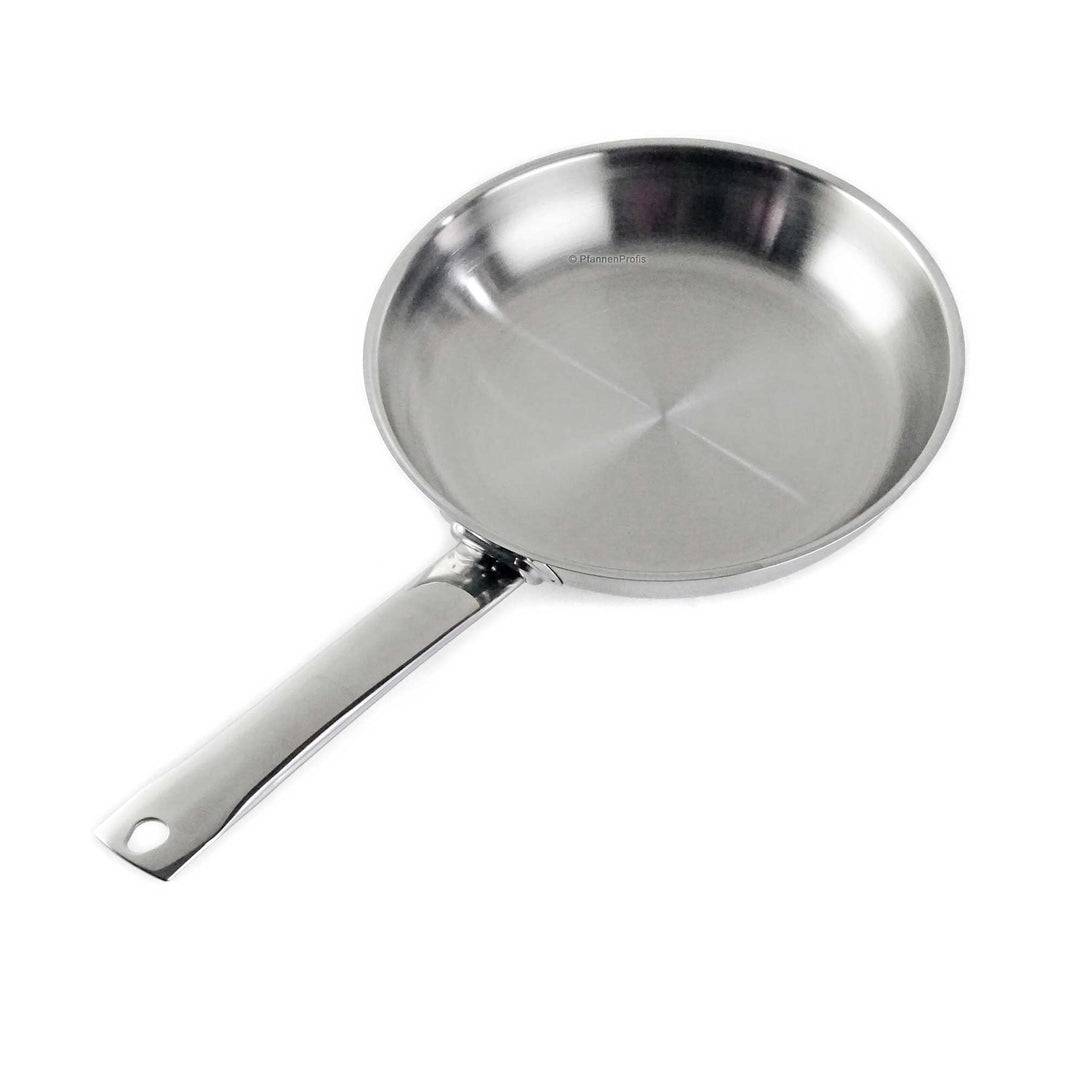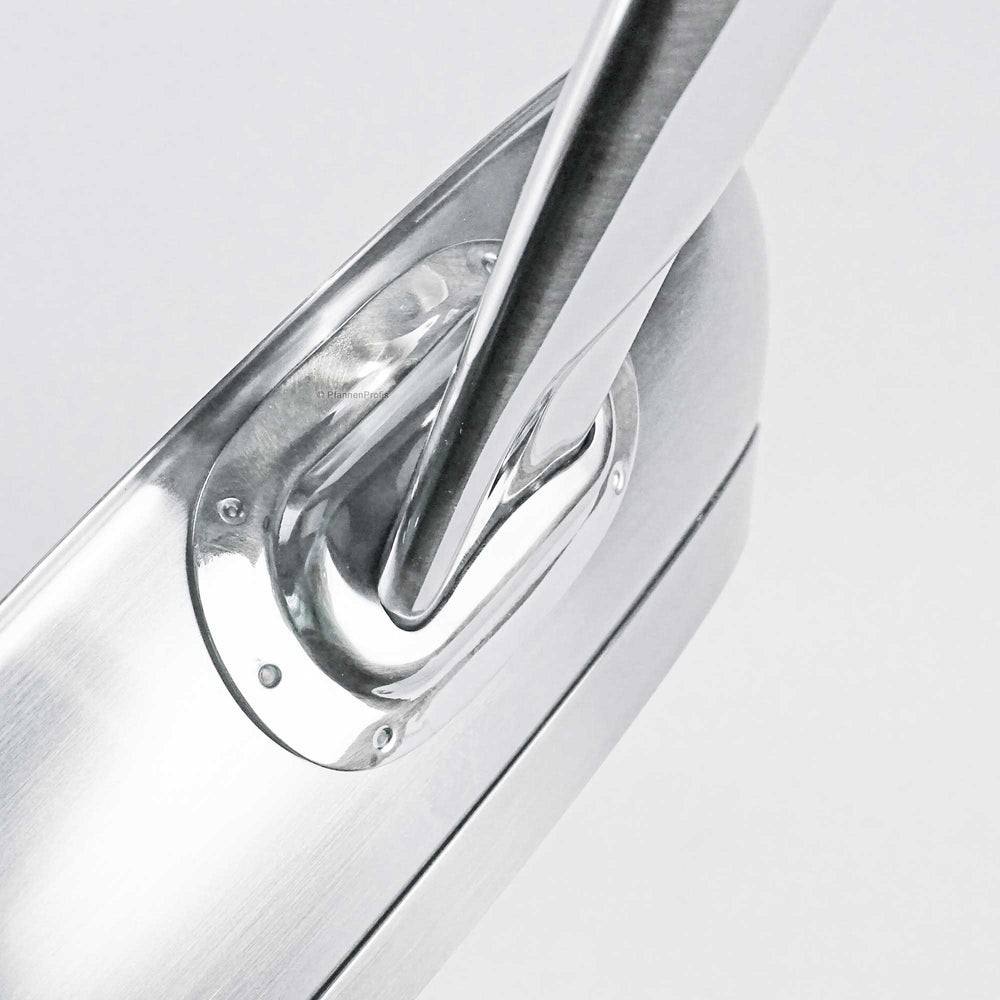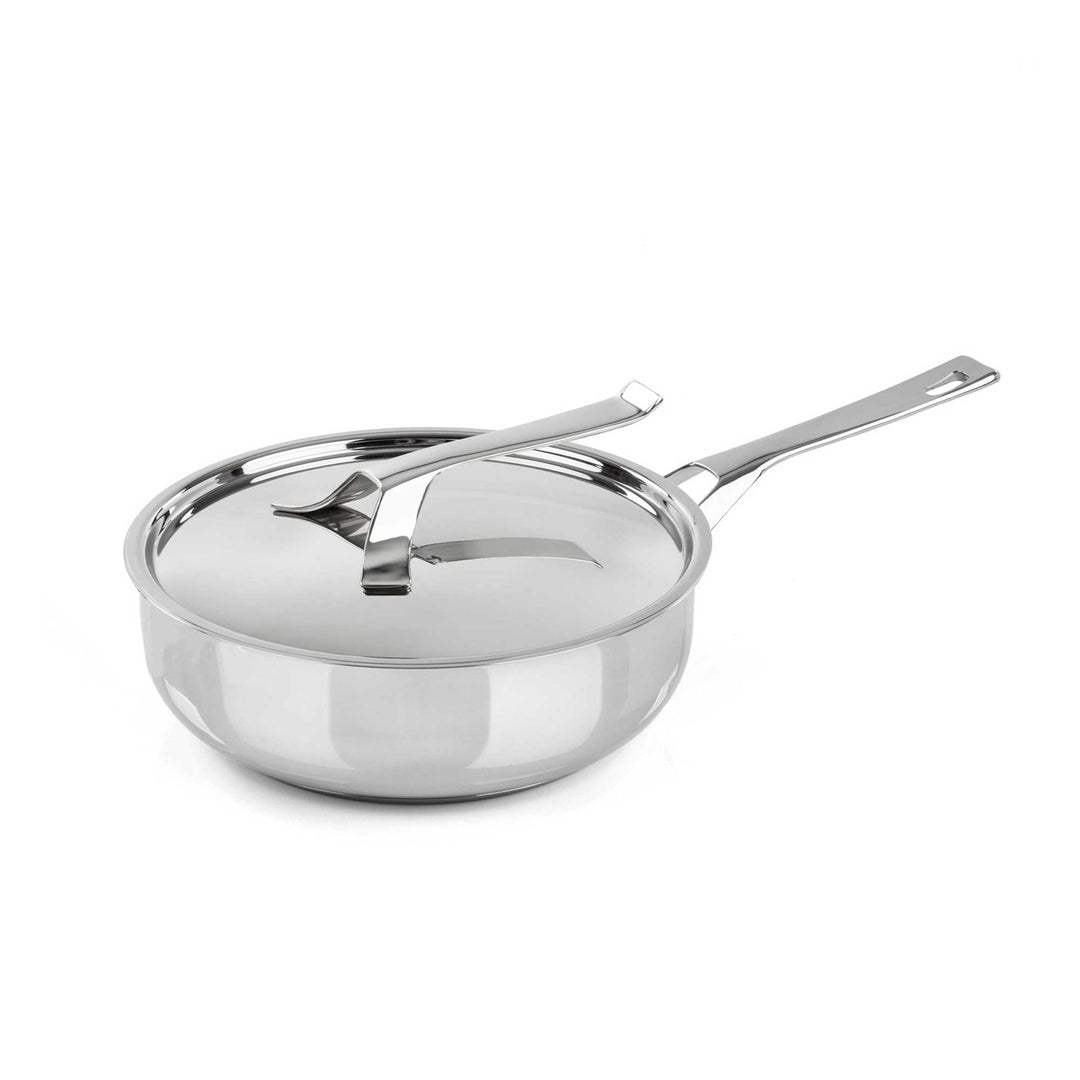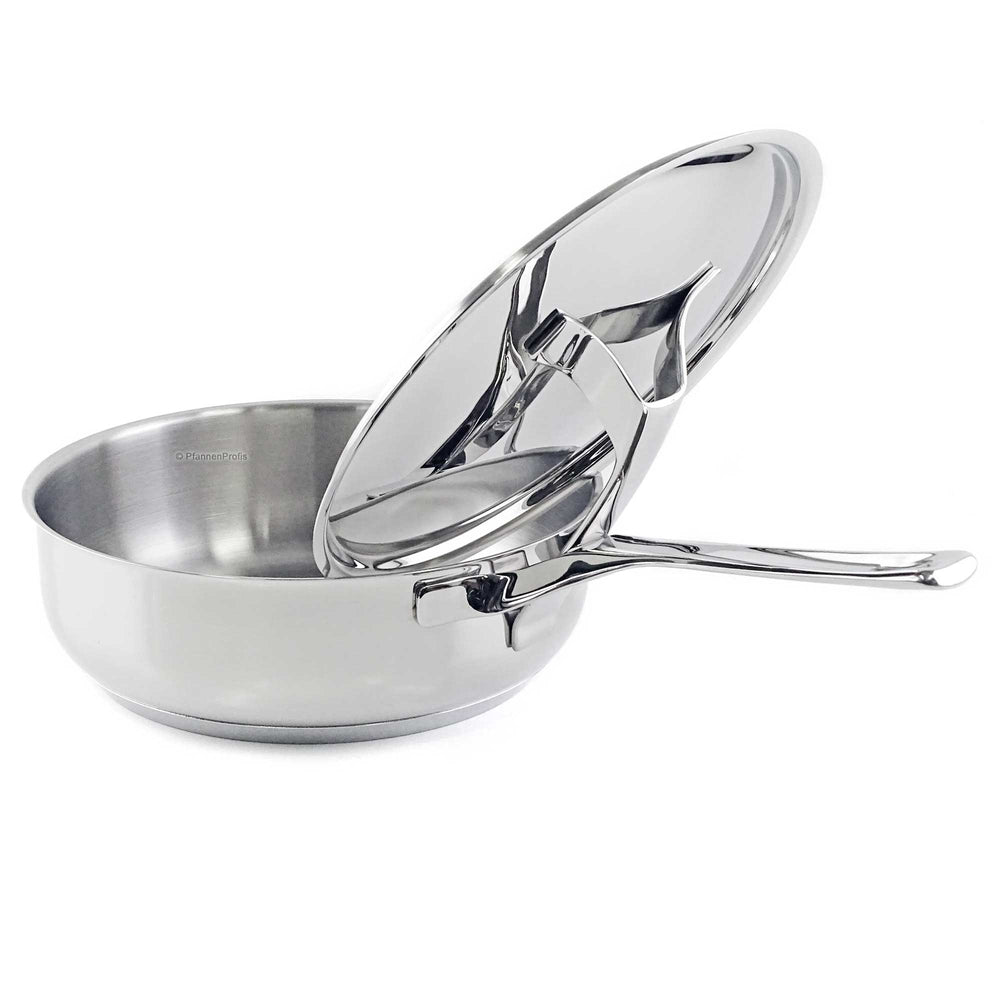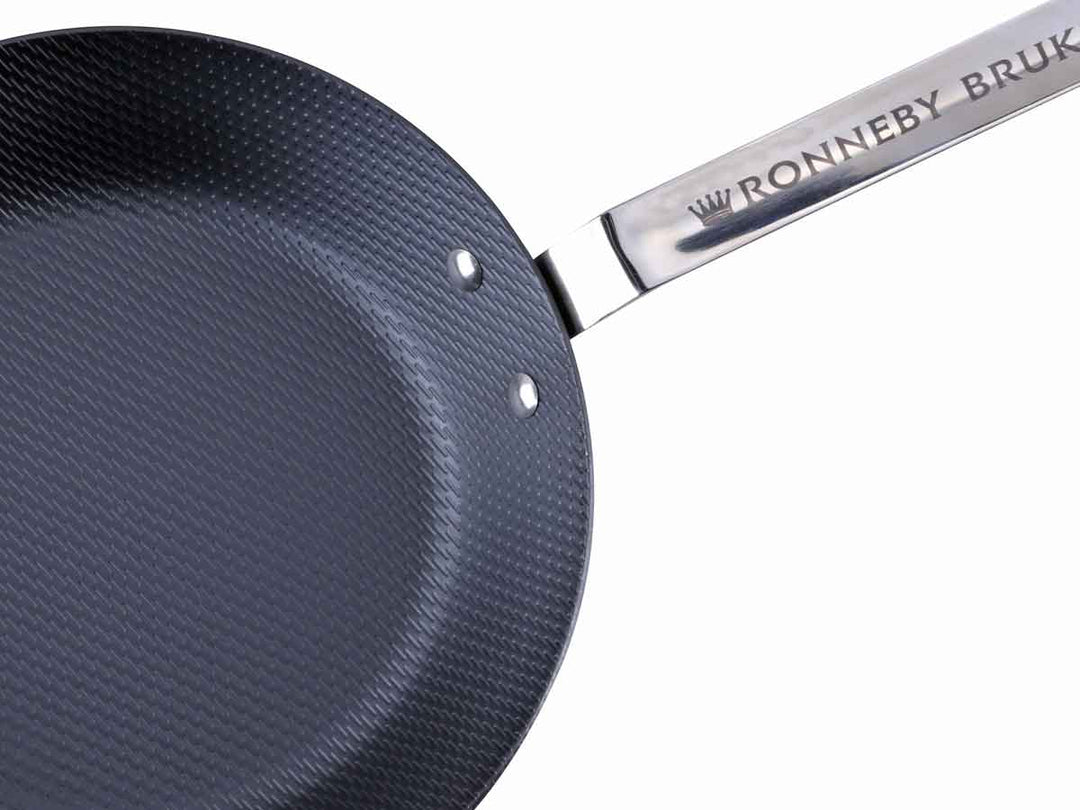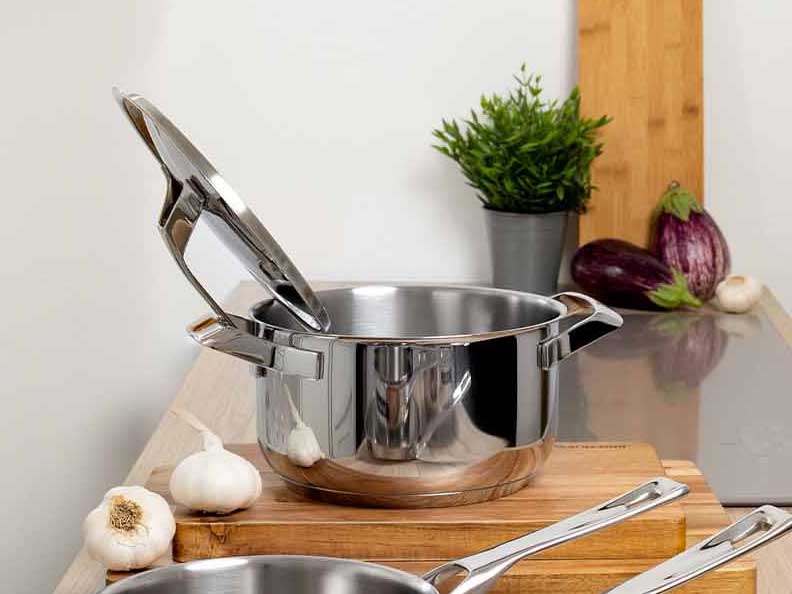
Stainless steel pans without coating
Extremely robust and durable, scratch-resistant, heat-resistant, perfect for crispy searing, sautéing or even flambéing.
Frequently asked questions about stainless steel pans
Yes, uncoated stainless steel cookware is generally dishwasher safe. To remove stubborn stains and discoloration, you can also use a standard stainless steel cleaner or a mild scouring cream.
These days, most stainless steel cookware is suitable for induction cooking. High-quality 18/10 stainless steel cookware, which is not itself induction-compatible, uses a base capsule for induction cooking, or 3-/5-ply cookware uses an outer layer made of induction-compatible stainless steel, e.g., 18/0 stainless steel.
Stainless steel cookware without plastic handles is usually oven-safe (please refer to the manufacturer's instructions). At temperatures above 200°C, stainless steel may undergo a slight discoloration on the surface (known as tempering) and appear slightly yellowish. This is harmless and can be removed by polishing with a stainless steel cleaner.
Pots and pans made of uncoated stainless steel are extremely robust and virtually scratch-resistant. Please note that metal kitchen utensils, fork tines, or knife blades can naturally leave marks on the stainless steel. Unlike coated cookware, however, these marks are harmless.
Rust-proof stainless steel pans don't need to be seasoned. Seasoning wouldn't make much sense anyway, since uncoated stainless steel cookware has the advantage of being easy to care for, dishwasher-safe, and, if necessary, easy to scrub with a scouring pad or scouring cream to get it perfectly clean. A burnt-on layer of grease would severely limit cleaning options.
When searing meat, it's normal for it to initially stick to the uncoated stainless steel, despite the cooking fat. Once a nice crust has formed (the Maillard reaction), the meat will detach itself and can be easily lifted and turned from the surface.
Make sure that the oil/fat in the pan is sufficiently hot before adding the meat, because the water escaping from the outer layer of the meat in the hot fat evaporates suddenly and creates a kind of cushion on the frying surface, which reduces sticking.
Uncoated stainless steel pans are less suitable for low-fat frying because uncoated stainless steel pans do not have a non-stick effect.
Fat is also a heat transfer agent that bridges even small gaps between the food being fried and the frying surface, thus ensuring better frying results.
For a low-fat kitchen, it is better to pat the food with kitchen paper after frying than to save on fat when frying.
Uncoated stainless steel has no non-stick properties. However, when frying non-stick foods (meat, vegetables), this is usually not a disadvantage if handled correctly.
However, for very delicate foods (e.g. egg dishes, breaded foods, pasta, etc.) it may be more sensible to use a coated pan (non-stick / ceramic).
3-ply or 5-ply refers to a 3- or 5-layer composite material made of stainless steel and aluminum. Aluminum is an extremely good heat conductor, but is relatively soft and not particularly durable. Stainless steel, on the other hand, is very hard and durable, but a relatively poor heat conductor.
3-ply/5-ply multi-layer material combines the respective material advantages of stainless steel and aluminum: One layer of aluminum (for 3-ply) or three layers of aluminum (for 5-ply) in the fully insulated core ensures heat distribution throughout the entire cookware, right up to the edges. The stainless steel inside and out ensures robustness and durability.




